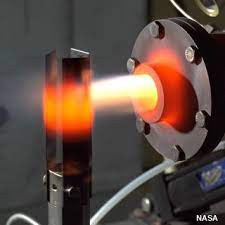Alloys and composites are somewhat similar in that they are both the result of mixing at least two different components – but they are quite different in other ways.
So, what is an alloy?
An alloy is a mixture of two or more components, at least one of which is a metal. All the elements are blended together and the final composition is shown by mass as percentages.
Some of the most-common alloys include bronze, brass, cast iron, sterling silver, white gold, and stainless steel. Each is made up of different materials. For example, bronze is 85-88% copper, 12-12.5% tin, and also includes small amounts of aluminium, manganese, zinc, and nickel.
Alloys are lighter than ‘pure metals’ and also often stronger. Many are also corrosion-resistant. The main negative is that alloys are usually less conductive (electrically and thermally) than pure metals.
What are the main applications of alloys?
Bronze is used to make musical instruments, medals, and sculptures. Alloys such as aluminium, stainless steel, and titanium are used in the construction of aircraft, the manufacturing of medical equipment, and car production.
What is a composite?
A composite is a mixture of at least two individual components. These components are usually significantly different to each other, both chemically and physically. Because the base elements are so different, they remain distinct and separate within the finished structure of the new material. There are some naturally occurring composites such as wood, but many are manufactured.
Some of the most common composite materials include Kevlar, Fibre Reinforced Plastic (FRP), reinforced concrete, plywood, fibreglass, and carbon fibre.
Nickel composites
Nickel composites offer excellent wear resistance and extreme hardness. If you would like to learn more about nickel composites, there are plenty of useful resources available online, such as those found here: https://www.poeton.co.uk/advanced-treatments/apticote-460-nickel-composites/.
Composites can offer high strength and stiffness despite being lightweight. They are usually resistant to water and corrosion and they are available in a range of sizes and thicknesses. The main disadvantages relate to cost and production methods.
What are the main applications of composites?
Composites are used across a wide range of industries, including aerospace, automotive, energy production, marine, and even sports and recreation.
To summarise, the key difference between an alloy and a composite is that alloys must contain at least one metal whereas composites may have none.





